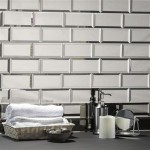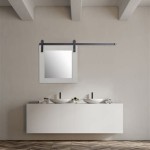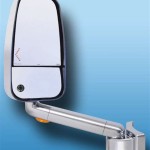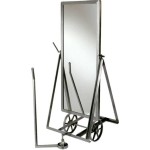```html
Antique Dresser with Trifold Mirror: A Timeless Reflection of Style and Craftsmanship
The antique dresser with a trifold mirror represents more than simply a piece of furniture; it embodies a historical narrative, reflecting evolving design aesthetics, craftsmanship techniques, and societal values across generations. These dressers, often passed down through families or discovered in antique shops, are tangible links to the past, offering a glimpse into the lives and styles of previous eras. Their enduring appeal stems from a combination of aesthetic beauty, practical functionality, and the inherent value associated with objects that have stood the test of time. Understanding the various aspects of an antique dresser with a trifold mirror – its history, construction, identifying features, and preservation – is essential for appreciating its full significance.
The trifold mirror, also known as a triptych mirror, is a defining characteristic of these dressers. The three-paneled design provides a comprehensive view, allowing the user to see themselves from multiple angles. This functionality was particularly valued in an era when personal grooming and presentation were considered essential. The central mirror is typically fixed, while the side panels are hinged, allowing them to be adjusted to optimize the viewing angle. The frames of these mirrors are often elaborately decorated, reflecting the prevailing artistic styles of the period during which they were crafted. These decorative elements can range from simple, understated moldings to elaborate carvings and inlays, depending on the dresser's origin and intended market.
The dresser itself is typically constructed from hardwoods such as mahogany, walnut, oak, or cherry. The choice of wood often reflects the availability of resources and the regional woodworking traditions of the time. The quality of the wood and the skill of the craftsman are readily apparent in the dresser's overall construction and the detailing of its components. Dovetail joints, mortise-and-tenon joints, and hand-carved details are hallmarks of quality antique dressers, indicating a level of craftsmanship that is rarely found in contemporary mass-produced furniture.
Identifying Features and Historical Context
Several key features can help identify the age, origin, and style of an antique dresser with a trifold mirror. The type of wood used, the style of joinery, the design of the hardware (knobs, pulls, hinges), and the overall ornamentation are all important indicators. Researching furniture styles prevalent during different periods, such as the Victorian era, the Art Deco movement, or the early 20th century, can provide valuable clues. For example, a dresser with heavily carved ornamentation and dark-stained wood might be characteristic of the Victorian period, while a dresser with simpler lines and lighter wood tones might be indicative of the Art Deco era.
The details of the trifold mirror itself can also offer insights. The shape and design of the mirror frame, the type of glass used, and any markings or labels on the glass can provide clues about its origin and age. Some antique mirrors may have imperfections in the glass, such as waves or bubbles, which are indicative of the manufacturing processes used at the time. These imperfections, while not considered flaws, can actually add to the mirror's character and authenticity.
Examining the dresser's hardware is another crucial step in the identification process. The style of the knobs and pulls, the type of hinges used, and any decorative elements on the hardware can all provide valuable information. Hardware designs often changed over time, reflecting evolving aesthetic preferences and technological advancements. Consulting reference books and online resources that specialize in antique hardware can be helpful in dating and identifying the dresser.
Construction Techniques and Materials
The construction techniques employed in antique dressers with trifold mirrors are significantly different from those used in modern furniture production. Handcrafted joinery, such as dovetail joints and mortise-and-tenon joints, was the norm, ensuring the structural integrity and longevity of the piece. These joints are typically visible on the exterior of the dresser and are a testament to the skill of the craftsman.
The types of wood used in antique dressers were carefully selected for their strength, durability, and aesthetic qualities. Mahogany, with its rich color and fine grain, was a popular choice for high-end furniture. Walnut, with its warm tones and distinctive grain patterns, was another favored option. Oak, known for its strength and durability, was commonly used for more utilitarian pieces. Cherry, with its reddish-brown hue and smooth texture, was often used for furniture with a more delicate and refined appearance.
The finishing techniques used on antique dressers also differ from modern methods. Traditional finishes, such as shellac, varnish, and wax, were applied by hand, resulting in a rich, lustrous surface that enhanced the natural beauty of the wood. These finishes were often built up in multiple layers, creating a deep, protective coating that could withstand years of use. Over time, these finishes can develop a patina, a soft, subtle sheen that adds to the dresser's character and authenticity.
Preservation and Care
Preserving an antique dresser with a trifold mirror requires careful attention to its unique needs and vulnerabilities. Maintaining a stable environment, with consistent temperature and humidity levels, is essential. Extreme fluctuations in temperature and humidity can cause the wood to expand and contract, leading to cracks, warping, and other damage. Direct sunlight should also be avoided, as it can fade the finish and dry out the wood.
Cleaning an antique dresser should be done with care, using gentle, non-abrasive products. A soft, damp cloth can be used to remove dust and dirt. Avoid using harsh chemicals or solvents, as they can damage the finish. For more stubborn stains or grime, a mild soap solution can be used, but be sure to test it in an inconspicuous area first. After cleaning, the dresser should be thoroughly dried with a clean, soft cloth.
Waxing the dresser regularly can help protect the finish and maintain its luster. Use a high-quality furniture wax specifically designed for antiques. Apply the wax in a thin, even layer, and then buff it with a soft cloth to achieve a smooth, polished surface. Avoid using polishes that contain silicone, as they can leave a residue that is difficult to remove.
If the dresser has any structural damage, such as loose joints or broken legs, it is important to have it repaired by a qualified furniture restorer. Attempting to repair the dresser yourself can potentially cause further damage and diminish its value. A professional restorer will have the knowledge and skills to repair the dresser using appropriate techniques and materials, ensuring that it is restored to its original condition.
The trifold mirror also requires special care. Clean the mirror with a glass cleaner specifically designed for antiques. Avoid using harsh chemicals or abrasive cleaners, as they can scratch the glass. If the mirror has any cracks or chips, it is important to have it repaired by a qualified glass restorer. Replacing the mirror with a modern replacement can diminish the dresser's value, so it is best to preserve the original mirror whenever possible.
Proper preservation and care are crucial for ensuring that an antique dresser with a trifold mirror continues to be a cherished heirloom for generations to come. By understanding its history, construction, and care requirements, you can appreciate its full value and protect its beauty for years to come.
```
Millcraft Victoria S 72 Dresser W Optional Tri Fold Mirror Quality Woods Furniture

Antique 1920s Vanity With Trifold Mirror Dressing Table

Rare Tri Fold Antique Burle Walnut Vanity With 3 Mirrors Kotton Klenser

Vintage 1930 S Art Deco French Vanity With Tri Fold Mirror And Stool

Trifold Vanity Transformation A Makeover To See Prodigal Pieces

Amish Heritage Wilma Custom 9 Drawer Dresser With Optional Beveled Tri Fold Mirror

Vintage Solid Wood Trifold Mirror Vanity Dresser 1920 1950 Rare 6 Drawers

19th Century Victorian Dresser W Tri Fold Mirrors Chairish
New Antique Vanity With Trifold Mirror Vintage Dressing Table Forever Pink Glen Mills Pa

Montgomery Dresser With Mirror







